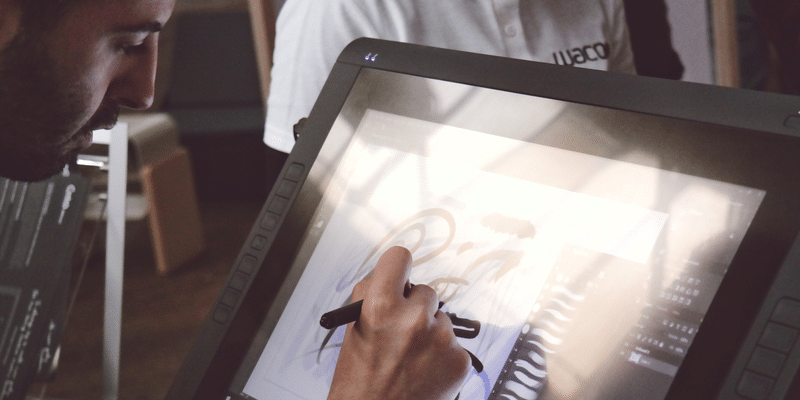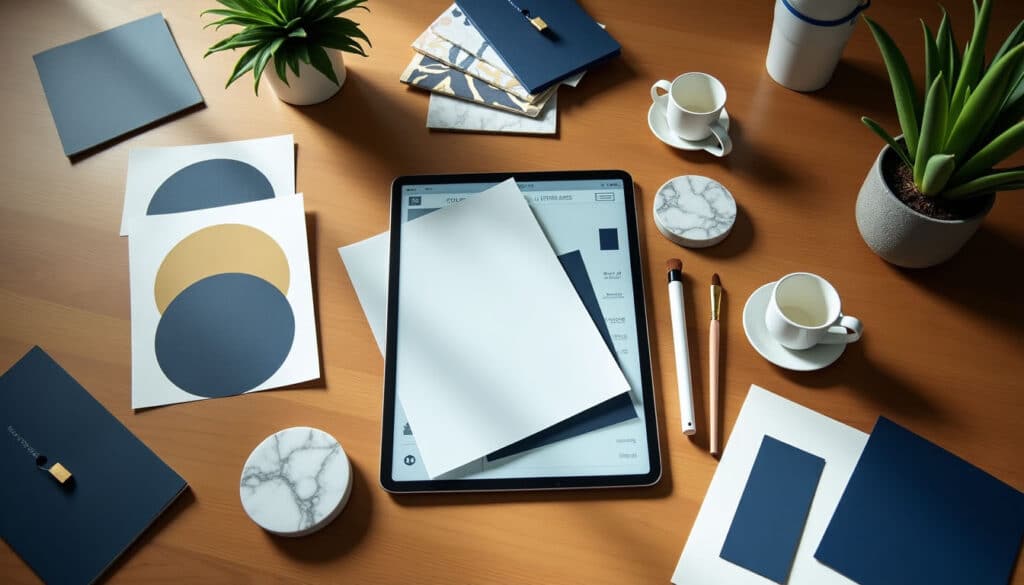
Logos act as silent yet powerful brand ambassadors in the vast branding landscape. They are more than graphics; they symbolize a company’s beliefs, aspirations, and values. These pivotal design elements wield the power to form the first and, often, the most lasting impression on consumers. This guide provides a comprehensive overview of the subtle intricacies involved in logo creation.
1. The Power of Color in Logo Design
Colors play a pivotal role in human psychology. They have the inherent ability to invoke a spectrum of emotions and perceptions. Every color conveys a unique message, bridging brands and consumers. A shade as vibrant as red might convey passion and urgency, while the tranquility of blue might denote trust and reliability. For brands, understanding these subtleties can mean the difference between resonating with their audience or fading into the background. Expert designers often spend significant time meticulously selecting the right color palette, ensuring it aligns with a brand’s core message.
2. Striving for Balance and Symmetry
Symmetry and balance are the cornerstones of any effective logo design. A well-balanced logo appeals to the eye and exudes a sense of stability and reliability. Think of some iconic logos that have stood the test of time. Their beauty often lies in their symmetry. Balance is not just about the visual weight of the design elements; it’s about ensuring that every part of the logo works harmoniously with the rest, creating a cohesive whole. Designers meticulously craft these elements to achieve an equilibrium that feels both intuitive and pleasing.
3. The Art of Keeping It Simple
There’s an undeniable charm in simplicity. While it might seem counterintuitive, the most memorable logos are often the simplest. They are easy to recall and versatile enough to adapt across multiple platforms, from business cards to billboards. This adaptability ensures that the brand maintains a consistent identity across diverse touchpoints. However, achieving simplicity isn’t straightforward. It requires distilling the brand’s essence into its purest form, removing any extra elements without compromising the core message.
4. Infusing Meaning and Purpose
Behind every impactful logo is a story, a deeper meaning that resonates with its audience. This narrative can be overt, like the arrow in the FedEx logo symbolizing forward motion, or it can be subtle, leaving room for interpretation. A logo’s success lies in conveying a brand’s essence and ethos without words. Designers delve deep into a brand’s history, values, and aspirations, looking for symbols and metaphors that can be seamlessly integrated into the design, crafting a visual story that speaks directly to the brand’s target audience.
Commandments of Logo Design
1. Prioritize Clarity Over Complexity
Minimalistic designs are more than just a trend; they are a testament to the power of clarity. In an age where consumers are bombarded with information, a clear and concise logo can cut through the noise. While it’s tempting to incorporate multiple elements to convey various facets of a brand, it’s crucial to remember that logos often need to be scaled. The true essence of a brand should shine through, irrespective of the medium or size.
2. Harnessing the Emotional Quotient of Colors
Colors are not merely visual elements; they carry profound emotional weight. Selecting the right shades that encapsulate the brand’s spirit is paramount. Brands should lean into the psychology of colors, understanding the myriad emotions each hue can evoke. By doing so, they can craft logos that appeal to the eyes and connect on a deeper emotional level.
3. Originality is Key
In a saturated market, originality can be a brand’s saving grace. It sets a brand apart from its competitors, carving out a unique identity. While drawing inspiration is natural, ensuring that a logo isn’t a mere imitation is essential. It should be a reflection of the brand’s unique character and values.
4. Typography as a Brand Voice
Typography is more than just selecting a font; it’s about giving voice to a brand. Every typeface carries its personality, mood, and history. From bold sans serifs that communicate modernity and strength to elegant scripts that whisper luxury, the choices made in typography can be as crucial as the color and shape used in the logo. This art of type speaks volumes about the brand’s character, and it’s essential to ensure that the voice aligns with the brand’s ethos.
Beyond the immediate visual appeal, typography must be functional. While a particular typeface might look beautiful in a standalone setting, it’s imperative to consider its legibility across various applications. Factors such as kerning, tracking, and weight come into play, ensuring that the type looks good and remains readable and practical across diverse mediums, from business cards to digital screens.
The Design Process
1. Client Collaboration: The Starting Point
The design journey often commences with an understanding derived from the client’s vision. These initial conversations are paramount. They provide a window into the brand’s heart, revealing its aspirations, challenges, and ethos. It’s a two-way street where designers absorb, question, and clarify, ensuring their foundation is rock solid.
With this foundation, the collaborative spirit extends throughout the design process. Regular checkpoints ensure the client’s perspective is never lost. These touch points, be it through meetings or feedback rounds, foster a relationship of trust and mutual respect, which is essential for a successful design outcome.
2. Defining the Blueprint
A blueprint acts as the North Star for any design project. Detailing expectations, deliverables, and timelines provides the client and the designer with a clear path forward. It removes ambiguity, ensuring every step taken has purpose and direction. This structured approach is fundamental in creative endeavors where subjectivity can sometimes cloud judgment.
While the blueprint provides a roadmap, it’s not set in stone. By its nature, design can be fluid, and challenges might emerge. Having a clear plan allows both the designer and the client to navigate these challenges, making adjustments while ensuring the project remains on course.
3. Groundwork Through Research
Before putting pen to paper, there’s a crucial phase of gathering intel. The research entails diving deep into the brand’s industry, understanding its competitors, and discerning prevailing design trends. Such comprehensive analysis illuminates the brand’s landscape and reveals opportunities to differentiate and shine.
With this knowledge, designers can approach the task with a broader perspective. It enables them to craft logos that are both timely and timeless. By understanding where the brand sits within the larger market context, designers can create visuals that resonate with the target audience while setting the brand apart.
4. Visual Mood Boards for Alignment
Visual mood boards are more than just a collection of inspiring images. They are the language that translates abstract ideas into tangible visuals. By gathering color palettes, typography samples, and imagery, mood boards paint a picture of the desired aesthetic, setting the tone for the design journey ahead.
These curated boards serve a dual purpose. For clients, they offer a sneak peek into the designer’s vision, ensuring to align both parties from the outset. Designers constantly refer to the mood board to guide their creative process and ensure they stay true to the established visual direction.
5. The Iterative Nature of Design
Design is not a linear journey. It thrives on iteration, a cycle of creation, feedback, refinement, and, sometimes, revisiting the drawing board. This iterative approach allows ideas to evolve, mature, and better align with the brand’s essence over time. It acknowledges that the first idea while promising, might not always be the best fit.
Feedback is the catalyst for this evolution. By presenting concepts and gathering client insights, designers can sharpen their vision, fine-tuning elements until they perfectly encapsulate the brand’s essence. While sometimes challenging, this back-and-forth ensures the end product resonates profoundly and authentically.
6. Unveiling the Masterpiece
The grand reveal culminates hours of collaboration, creativity, and hard work. The unveiling is when the finalized logo is presented in all its glory across various formats and applications. It’s a testament to the shared vision of the designer and the client, a visual embodiment of the brand’s soul.
Accompanying this logo is often a comprehensive style guide. This invaluable document provides guidelines on logo usage, color codes, typography, and more. It ensures consistency in brand representation, acting as a reference for all future branding endeavors, from marketing collateral to digital applications.
7. Ongoing Support and Partnership
The end of the design process doesn’t signify the end of the relationship. In many cases, it marks the beginning of an ongoing partnership. Brands evolve, markets shift, and design needs to keep pace. An enduring relationship with designers ensures that the brand’s visual identity remains relevant, adapting and growing as needed.
Hire Urban Geko Design for your Logo Design
As explained in this guide, the journey of logo design is intricate and profound. It’s a delicate blend of strategy, creativity, collaboration, and insight. At Urban Geko, we believe in this deeply. We don’t just make logos; we bring brand stories to life. Our team mixes creativity with careful planning to make logos stand out. A good logo helps a company be recognized in a world with so many brands. With our help, brands can do more than just fit in; they can leave a lasting impression. Contact us to learn more.























